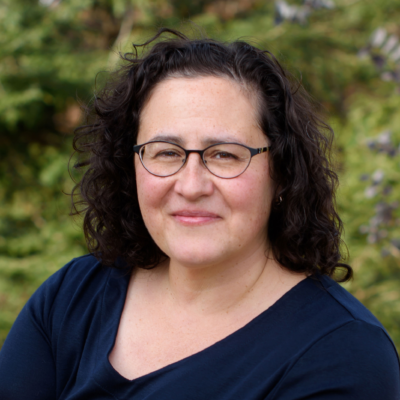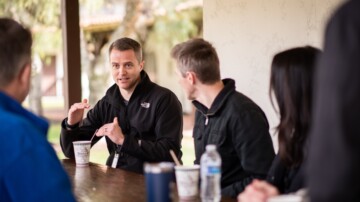Beyond the Newest Philanthropy Buzzword: Knowledge Work Is Core to Equitable Change

Philanthropy loves “new” things. Today, knowledge work is coming into fashion in foundations and the nonprofit sector. But it is not just a new buzzword, a box to be checked, or even a singular phase in the grant cycle. Knowledge work is growing because it sits at an important intersection between grantmaking and equitable change.
How the sector understands and engages in knowledge work is crucial to the success of philanthropic efforts. Whether you are working within a funding organization or on the ground in social change, developing an effective knowledge practice will help to advance strategic missions and goals.
More people working in or with grantmaking organizations now have some term related to knowledge work in their titles or job descriptions. Knowledge insights, grants and learning, information systems, data discovery, or relational analysis are just some of the terms showing up alongside the more familiar phrases of research and development and data analysis.
However, there is still a lot of confusion about what knowledge work is, what it is for, and how to do it. Sadly, many current change efforts that try to incorporate knowledge work for social good end up with disjointed or burdensome lists of isolated activities that really aren’t very engaging or valuable.
Essence of Knowledge
After more than two decades in the knowledge field—located at various times in community program evaluation, academia and philanthropy—I have come to the conclusion that our biggest problem in maximizing knowledge work is that we too often conflate knowledge with learning. Learning and knowledge are intimately connected but are actually different.
Learning, we do naturally. It helps us to adapt, adjust, and evolve amidst complexity. We can learn through direct experience. We can learn through reflection and come to deeper understandings. Learning can be formal or informal, designed or serendipitous, individual or collective.
Knowledge, however, is socially constructed and located specifically in place and time. It is about actively making meaning in interaction with a social context. Whether knowledge is spoken or not, it is public. It is voiced or expressed outwardly in society in some way.
When we momentarily set aside the many foundation models or toolkits for addressing a particular task, we start to remember that the essence of knowledge is shared meaning making—how we, together, come to understand and engage in community, in the world around us, and in change itself. Once we embrace knowledge work, not as a technical task but as social construction, we then start to ask exciting questions about relationships, purpose, and movement. As we reaffirm shared meaning making, we realize that knowledge work and social change are quite intertwined and interdependent.
A History of Knowledge Work in Philanthropy
Knowledge building and philanthropy have a long past. Formal philanthropy has been aligned with notions of knowledge work since its very early days. From the urban demonstration projects of the historic foundations (Kellogg, Ford, Carnegie) to the contemporary emphasis on indicators and evaluation work, the sector has increasingly embraced systematic and intentional research processes for advancing social change goals. However, in the push towards impact, philanthropy has adopted a laundry list of activities—landscape scans, focus groups, case studies, logic models—to help in figuring out what is important to know to “do good” better. These are often perceived as disconnected from and less important than grant strategy.
Fast forward to today….
Professionals tasked with a knowledge role often organize what feels like chaos—to create structure and focus attention on the most important information. We live in an information society. There is so much information coming at us every day. It is easy to feel overloaded, inundated, and overwhelmed. The underlying assumption and pressure is that, if we just gather the right information and use that information to make decisions, then the world will be a better place.
However, creativity and change don’t come from a constant state of overwhelm. No amount of information matters for equitable change if it is disconnected from relationships and social interaction. Let’s be honest, more information never leads, by itself, to desired change.
Whether we are designing a grants management system or reporting forms, creating an internal information platform, or building a learning network among grantees and partners, grants professionals can be key to maximizing knowledge investments if we remember that knowledge matters more than information.
How do we move from information overwhelm to knowledge work grounded in shared meaning making and change? How do we take back our own sense of agency? What does it take to maximize knowledge work as the possibility at the intersection of grantmaking and equitable change?
Three actions can lead to more effective alignment between knowledge work and change: making distinctions so that we effectively ground datamaking, framing our work as social construction so that we harness the power of questions, and embracing trajectory thinking so that we can integrate knowledge practice with strategy.
Action One: Making Distinctions about Data
When creating or taking on a knowledge role, making one key distinction can help to move us from overwhelm to potential—information is not data and data is not knowledge. Although these may sometimes be talked about as the same, there are important differences. Information is everything that is coming at us. It comes from many different directions and perspectives and in many forms. We may seek it out or it may just show up. Information is all around us.
Data can only become knowledge when we engage with it in a socially connected way.
Data requires intention. We make information into data when we explicitly attach a question to it and explicitly or implicitly connect it to an approach or perspective for making sense or interpreting it. Data is a decision.
Data can only become knowledge when we engage with it in a socially connected way. This may be in actual relationships with others or with awareness of the social context where the knowledge is being constructed. In social theory this is sometimes called social interactionism, the idea that humans are social beings and everything we think or do is affected by our understanding of the social world around us. This understanding led me to an approach for “datamaking” that I utilize with groups.
Example: “Datamaking” as engagement
I recently worked with an arts and culture intermediary nonprofit that focused on capacity development, network building, and connecting local nonprofits to state agencies and grants. Although the work on the ground was creative and engaged, they faced the familiar challenges of aligning the organizational processes of executive and staff with the timeline of board engagement. The executive and staff wanted to be responsive to the needs and opportunities on the ground. However, it was difficult to keep aligned with what the board needed to govern effectively and contribute to the longer-term sustainability desires of the organization.
When I proposed the concept of “datamaking,” I was seeking to bring as many aspects of the organization together as possible. Each person of the knowledge team—the board chair, the executive director, marketing and administrative staff, and a community diversity and engagement consultant—came together in conversations about what mattered most in the organization’s work and what data could be collected to illuminate how their work was progressing.
In framing knowledge work as something we do together and datamaking as intentionally connecting information to shared questions, this approach brought perspectives from various parts of the organization into the meaning making. Coming together in this way enabled the team to also name some shared parameters that could be used as a decision-making framework to better engage the board and even the broader community.
How does making the distinction between knowledge work and datamaking support grantmakers?
- Prompts us to identify internal organizational work and external work and connect the two
- Helps us focus on relationships rather than technical tasks or tools
- Supports us in looking beyond concepts and engage in ways that embody change
- Calls us to engage across organizational roles with a shared commitment to equitable change
Action Two: Working through social construction
There is a tendency to think about knowledge as something produced outside of ourselves. It is to be made by experts and controlled by those in authority. To the contrary, knowledge actually comes about through the shared social action of making sense out of our observations, experiences and interactions with the world. Because of the social aspect of knowledge, asking questions is a very powerful force in the work.
Questions are actually embedded with understandings of the past, ideas about what we are up to today, and beliefs about what change is possible. When we ask a question, we can open new ways of understanding. We can use questions to move us to exploration and creativity.
Questions are actually embedded with understandings of the past, ideas about what we are up to today, and beliefs about what change is possible.
The questions I am referring to are not the questions of data gathering alone. Yes, there are many questions we ask in order to categorize and quantify. However, the questions that make change possible are those that invite people into reflection and shared action.
Example: Questions as Powerful Invitations
I once spent a few years working with a great equity organization created by, and filled with, experienced change makers. The initiative built a deep learning network to support change agents within organizations seeking to increase inclusion as integral to effectiveness. I was asked to engage with a group of changemakers to help illuminate their change work.
On day one, we started with questions connected to knowledge work. We talked about our beliefs and experiences with ideas of truth, of research, of story. We discussed what we wanted to be “up to” together in our inquiry. Everything that we did together afterward evolved from that discussion. With the questions, we were inviting lived experience and holding space for stories of the wonders of knowledge. There was an awareness of the ways processes and hierarchies of formal knowledge have been used to harm and oppress non-dominant groups.
By inviting the group members as full participants in framing our space and making meaning together, those early questions grounded our work. We continued to ask ourselves questions that surfaced lived experience and provided us the data that we could analyze together through dialogue.
How does focusing on questions expand grants practice?
- Prompts us to think in active and social terms, which means relationships are at the center
- Helps us to create spaces for sharing lived experience, which focuses attention on the inclusion of varied cultural frameworks, diversity of perspectives, and social realities
- Supports us in framing knowledge practice as how we show up in change efforts
- Calls us to ask questions in ways that make authority, power, and social structures more transparent in service to equity
Action Three: Embracing “trajectory thinking”
In talking with grants professionals in this emerging field, I hear how limited awareness, and sometimes core misunderstandings, are still a challenge in knowledge work. One of the most important things to explain is how knowledge practice is necessary to effective grant strategy even though it seems to hold a unique energy and many times a different relationship to the idea of effectiveness.
Although laying out specific plans, identifying leverage points, and targeting investment to meet benchmarks and goals may be appropriate in grant strategy discussions, these are misdirected when it comes to understanding the role of knowledge work. Of course, knowledge practice in philanthropy should align with and support targeted strategic goals. However, knowledge work itself does not fit into a linear goal-focused orientation. Trajectory thinking is actually more useful for knowledge success.
Trajectory thinking is about naming where we are in our understanding, including any history behind it, and then envisioning where we are heading. The destination can never be reached; the intention is always in the movement toward. For example, we might be moving from an organizational climate that has been bounded and insular toward greater engagement of grantees and communities in shared meaning making. We may want to move toward treating reporting as a compliance tool to public reporting as an articulation of shared desires and advocacy.
These examples illustrate that there is no definitive checklist to show that knowledge is happening, only continual reflection on how it is happening. Framing knowledge efforts with trajectories is a crucial step in differentiating the nature of knowledge work while still aligning it with the success of change strategy and goals.
Example: Trajectory thinking for alignment
About a decade ago, I was working within a family foundation that did amazing network building and change work in the education space. The organization had a unique review practice so that every year, staff could tell what they had done to meet their written job responsibilities and name additional or different work they were also doing in response to the needs of the organization. The knowledge role was new to the organization, and as I hear from folks in the field all the time, to be successful, the knowledge activities were often shifting.
As my work morphed to align with the needs of the organization and strategy, I decided to craft a knowledge mission statement to help guide the work as it shifted. Later I created the notion of knowledge trajectories to try to encompass and articulate what the knowledge work was about even if I couldn’t always anticipate what specific knowledge tasks would be needed to support grant strategy.
How does trajectory thinking strengthen grantmaking?
- Prompts us to keep knowledge work grounded in the overall purpose and the equity intentions of change efforts
- Helps us to articulate the nature and uniqueness of knowledge work so that it is better understood and valued
- Supports us in actively and continuously aligning knowledge work with strategy success
- Calls us to embrace the shared nature of our work so that we task ourselves with transparency in naming the what, how and why of our knowledge practice
Putting these ideas into practice
Now that we have opened knowledge work as a broad umbrella focused on meaning making and explored some key distinctions, embraced social construction, and moved into trajectory thinking, what do we do with all this in practice?
No matter your official role or title or where you sit in grantmaking, or even whether your role is envisioned as staff, program, or leadership, developing an effective knowledge practice is about getting really good at moving ideas and concepts through the structures, spaces and pathways that exist inside and outside your organization. Focusing on conversations as opportunities, relationships as the core, and the action cycle of transforming information into data and then into knowledge, can strengthen your knowledge practice and more effectively align knowledge work with the change missions and goals you are tasked with enriching.
To learn more about knowledge building and its impact on equity in grantmaking, check out the webinar, Alchemy in Action: The Dance of Knowledge Building, Grant Strategy, and Equity.


